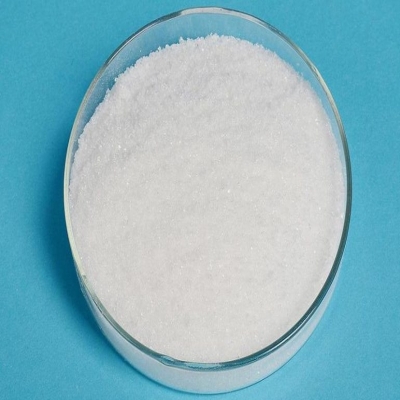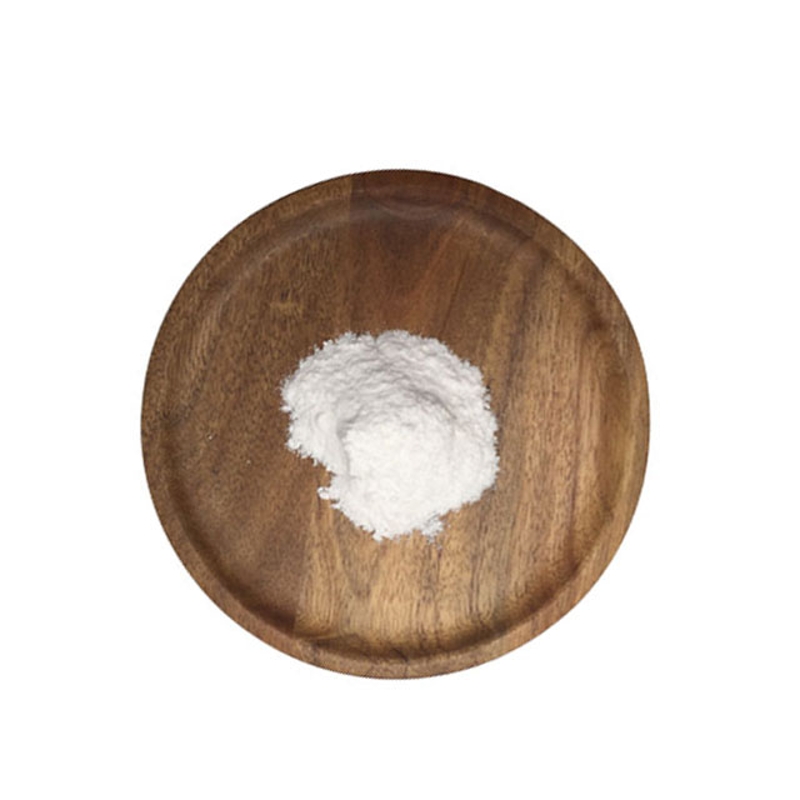-
Categories
-
Pharmaceutical Intermediates
-
Active Pharmaceutical Ingredients
-
Food Additives
- Industrial Coatings
- Agrochemicals
- Dyes and Pigments
- Surfactant
- Flavors and Fragrances
- Chemical Reagents
- Catalyst and Auxiliary
- Natural Products
- Inorganic Chemistry
-
Organic Chemistry
-
Biochemical Engineering
- Analytical Chemistry
- Cosmetic Ingredient
-
Pharmaceutical Intermediates
Promotion
ECHEMI Mall
Wholesale
Weekly Price
Exhibition
News
-
Trade Service
In order to fight against the new crown virus in the case of a shortage of medical resources in 2020, medical institutions across the United States sterilize personal protective equipment (PPE) such as N95 masks, for example, through methods such as ultraviolet (Ultraviolet, UV) to achieve PPE.
Repeated use, but the safety and efficacy of these methods are questionable
.
Now, researchers at The National Institute of Standards and Technology (NIST) show that N95 masks can be sterilized for reuse without affecting their function
Figure 1 N95 mask (Source: [1])
In a recent study titled " Disinfection of Respirators with Ultraviolet Radiation ," published in the National Institute of Standards and Technology Research Journal , researchers scrutinized N95 masks exposed to ultraviolet light for traces of the virus and found Look for changes in its fiber shape and evaluate its ability to filter aerosols and other substances [1]
.
The results of the study show that UV light can effectively clean N95 masks, which can be reused
Figure 2 Research results (source: [1])
In the initial outbreak, as demand for PPE far outstripped supply, to ease resource constraints, healthcare workers began exploring ways to sterilize masks and other PPE, including UV-C, a common application of ultraviolet radiation for sterilization
.
UV-C has been used to remove bacteria and viruses from the air and water, but the effectiveness of N95 mask viruses remains to be considered
In the study, the researchers first soaked N95 masks in a solution containing OC43, a human coronavirus, and then fixed the masks on a rack within the UV-Concepts system (which was lined with 19 UV- C lamp, the housing is coated with a reflective surface) and irradiated with UV light for 3 minutes
.
After the UV exposure ended, the researchers analyzed the amount of active OC43 virus remaining on the N95 masks and found that this method adequately sterilized all three layers of the N95 masks, and was even able to inactivate virus particles by up to 100% in some areas [2]
Figure 3 Equipment for UV disinfection of N95 masks (Source: [1])
"It's unclear whether the UV-C wavelengths used to inactivate viruses produce chemicals such as ozone that could damage the plastic in N95 masks, so effective inspection is important," said NIST Research Institute John Wright
.
The function of N95 was examined through extensive tests to see if UV radiation had altered its structure
To test whether UV-sterilized N95 masks remained highly protective against the virus, the researchers examined the filtration capacity and mechanical properties of N95
.
In order to determine whether the filtering ability of N95 masks changed, the researchers aimed the salt-carrying aerosols (simulating the size of exhaled aerosols) at the masks, calculated the aerosols flowing through the masks, and found that the filtering ability of the radiation-sterilized N95 masks did not change; To determine whether there was any change in its mechanical properties, the researchers used a mechanical tester to test the mechanical properties on the mask, and the results of the mask profile integrity showed no visual degradation
In the future, researchers in the UV industry could use the data from this study as a basis for research to understand the effects of different levels of UV-C radiation on the performance and cleanliness of N95 masks
.
Researcher Poster said, "By establishing a UV sterilization standard for N95 masks, the reuse of N95 masks can help us deal with the next tight PPE supply chain
References:
[1] https://nvlpubs.
nist.
gov/nistpubs/jres/126/jres.
126.
058.
pdf
[2] https://medicalxpress.
com/news/2022-03-ultraviolet-n95-masks-reuse-hindering .
In order to fight against the new crown virus in the case of a shortage of medical resources in 2020, medical institutions across the United States sterilize personal protective equipment (PPE) such as N95 masks, for example, through methods such as ultraviolet (Ultraviolet, UV) to achieve PPE.
Repeated use, but the safety and efficacy of these methods are questionable
.
Now, researchers at The National Institute of Standards and Technology (NIST) show that N95 masks can be sterilized for reuse without affecting their function
.
Figure 1 N95 mask (Source: [1])
Figure 1 N95 mask (Source: [1])In a recent study titled " Disinfection of Respirators with Ultraviolet Radiation ," published in the National Institute of Standards and Technology Research Journal , researchers scrutinized N95 masks exposed to ultraviolet light for traces of the virus and found Look for changes in its fiber shape and evaluate its ability to filter aerosols and other substances [1]
.
The results of the study show that UV light can effectively clean N95 masks, which can be reused
.
.
Study results show that UV light can effectively clean N95 masks for reuse
Figure 2 Research results (source: [1])
Figure 2 Research results (source: [1])In the initial outbreak, as demand for PPE far outstripped supply, to ease resource constraints, healthcare workers began exploring ways to sterilize masks and other PPE, including UV-C, a common application of ultraviolet radiation for sterilization
.
UV-C has been used to remove bacteria and viruses from the air and water, but the effectiveness of N95 mask viruses remains to be considered
.
This study sought to understand the disinfection effect of N95 masks using UV-C
.
In the study, the researchers first soaked N95 masks in a solution containing OC43, a human coronavirus, and then fixed the masks on a rack within the UV-Concepts system (which was lined with 19 UV- C lamp, the housing is coated with a reflective surface) and irradiated with UV light for 3 minutes
.
After the UV exposure ended, the researchers analyzed the amount of active OC43 virus remaining on the N95 masks and found that this method adequately sterilized all three layers of the N95 masks, and was even able to inactivate virus particles by up to 100% in some areas [2]
.
Figure 3 Equipment for UV disinfection of N95 masks (Source: [1])
Figure 3 Equipment for UV disinfection of N95 masks (Source: [1])"It's unclear whether the UV-C wavelengths used to inactivate viruses produce chemicals such as ozone that could damage the plastic in N95 masks, so effective inspection is important," said NIST Research Institute John Wright
.
The function of N95 was examined through extensive tests to see if UV radiation had altered its structure
.
The research team used a scanning electron microscope to magnify images of the masks more than 2,000 times to observe fiber changes in N95 masks
.
With the aid of electron microscopy, the researchers observed that there was no significant difference in fiber size and shape between the N95 masks that had been irradiated with ultraviolet radiation and those that had not been irradiated
.
To test whether UV-sterilized N95 masks remained highly protective against the virus, the researchers examined the filtration capacity and mechanical properties of N95
.
In order to determine whether the filtering ability of N95 masks changed, the researchers aimed the salt-carrying aerosols (simulating the size of exhaled aerosols) at the masks, calculated the aerosols flowing through the masks, and found that the filtering ability of the radiation-sterilized N95 masks did not change; To determine whether there was any change in its mechanical properties, the researchers used a mechanical tester to test the mechanical properties on the mask, and the results of the mask profile integrity showed no visual degradation
.
The results of the mask profile integrity showed no visual degradation.
In the future, researchers in the UV industry could use the data from this study as a basis for research to understand the effects of different levels of UV-C radiation on the performance and cleanliness of N95 masks
.
Researcher Poster said, "By establishing a UV sterilization standard for N95 masks, the reuse of N95 masks can help us deal with the next tight PPE supply chain
.
"
References:
References:[1] https://nvlpubs.
nist.
gov/nistpubs/jres/126/jres.
126.
058.
pdf
[2] https://medicalxpress.
com/news/2022-03-ultraviolet-n95-masks-reuse-hindering .
html
nist.
gov/nistpubs/jres/126/jres.
126.
058.
[2] https://medicalxpress.
com/news/2022-03-ultraviolet-n95-masks-reuse-hindering .
htmlLeave a message here







